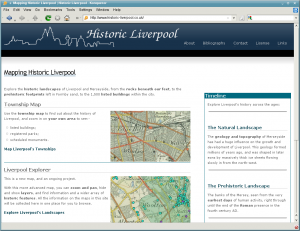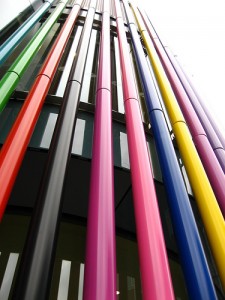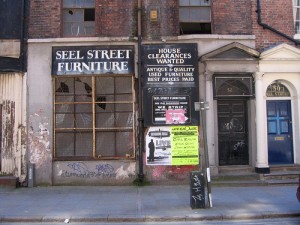
The Herculaneum Docks, South Liverpool - industrial heritage no longer with us (from the World War I Document Archive)
Industrial Heritage at Risk is this year’s Heritage at Risk theme, launched today by English Heritage in conjunction with the Council for British Archaeology (CBA) and the Association for Industrial Archaeology (AIA). The annual Heritage at Risk survey launch is in October.
Liverpool is not always closely associated with ‘industry’ in the same sense as the wool industry of Manchester and Lancashire, or the coal industry of Yorkshire. Liverpool’s World Heritage Site is the ‘Maritime Mercantile City‘, and even though the Exchange buildings and the Customs house are closely linked with industry on a wider scale, it’s more accurate to class it as ‘commerce’.
However, commerce is difficult to see embodied in archaeology or buildings, and the buildings English Heritage are talking about are as often as not a product of industry, made possible by the Industrial Revolution, rather than playing a part in industrial production itself.
In fact, much of Liverpool’s built heritage fits this bill rather well.
[There is a lot more detail about the development of Liverpool’s small-scale industries (potteries, mills and the like) in the Liverpool and Toxteth sections of the Historic Liverpool website (or search for ‘mill‘ or ‘pottery‘ to see a whole lot more).]
Liverpool’s industrial heritage at risk
All the sites at risk in Merseyside can be seen via a search on English Heritage’s Heritage at Risk microsite: . You can then break the list down into classes of ‘at risk’ heritage, including buildings, conservation areas, scheduled monuments and registered parks and gardens.
The industrial class of heritage is small but easy to spot: there’s the infamous case of the Stanley Dock tobacco warehouse as well as the Stanley Dock conservation area itself.
But English Heritage wants a wider debate on this, rather than just promoting the current list of at-risk buildings. So, start here if you want (in the comments!) or visit the Industrial Heritage at Risk Flickr group.
Alarmingly there’s a photo of Albert Dock in the photo pool, but as I say this discussion is about a wider appreciation of industrial heritage. Remember, the Albert Dock was once indeed at risk of demolition, and is one of the best reminders of how historic buildings can be brought back into use successfully as modern developments.
The aim of the Flickr group is to bring people together to discuss which parts of their industrial heritage are most-loved, and those which perhaps should be added to the list come October. You can, as with any Flickr group, add photos and comments of your own.
So this is a call from one Liverpool historian to others: get your photos on there and promote the best of Liverpool industrial archaeology! Here’s a few suggestions to get you thinking:
- Albert dock (you can never have too much Albert Dock)
- Stanley Dock and the tobacco warehouse
- Liverpool Maritime Mercantil City World Heritage Site (plenty of room for discussion)
- Lime Street Station and the railway and tunnels to Edge Hill and beyond
- Former Bryant and May Match Factory
- The Three Graces
- Leeds-Liverpool Canal












